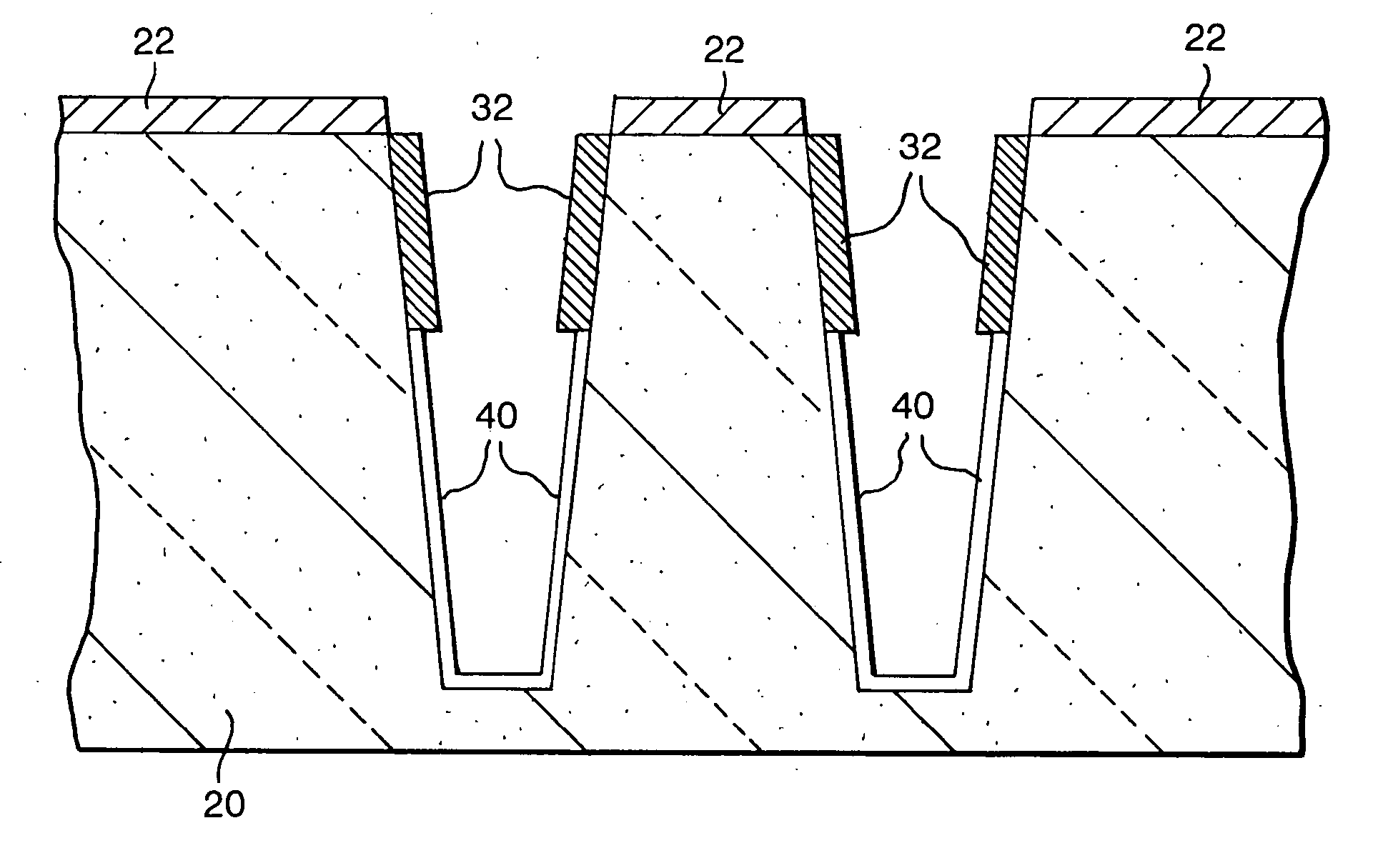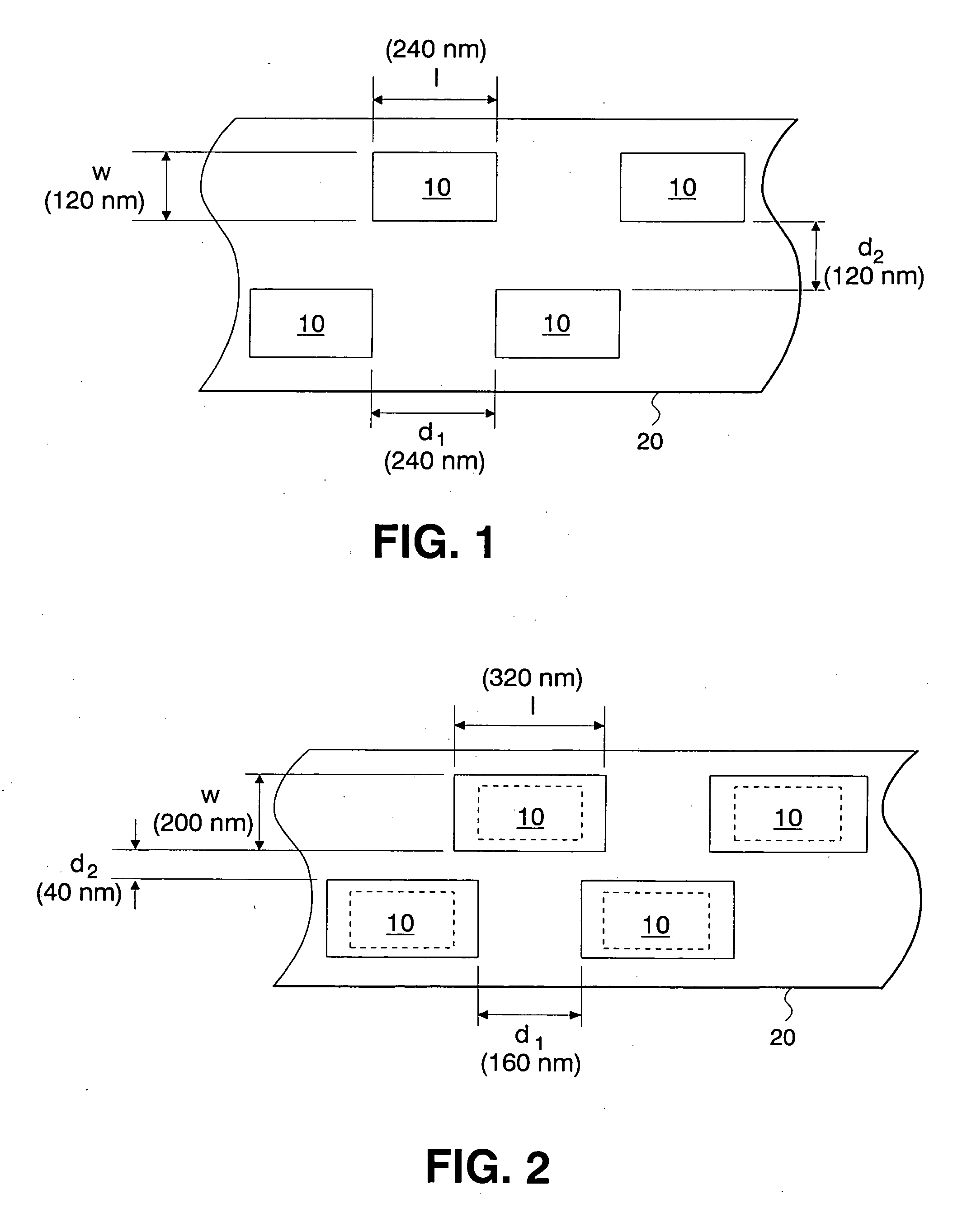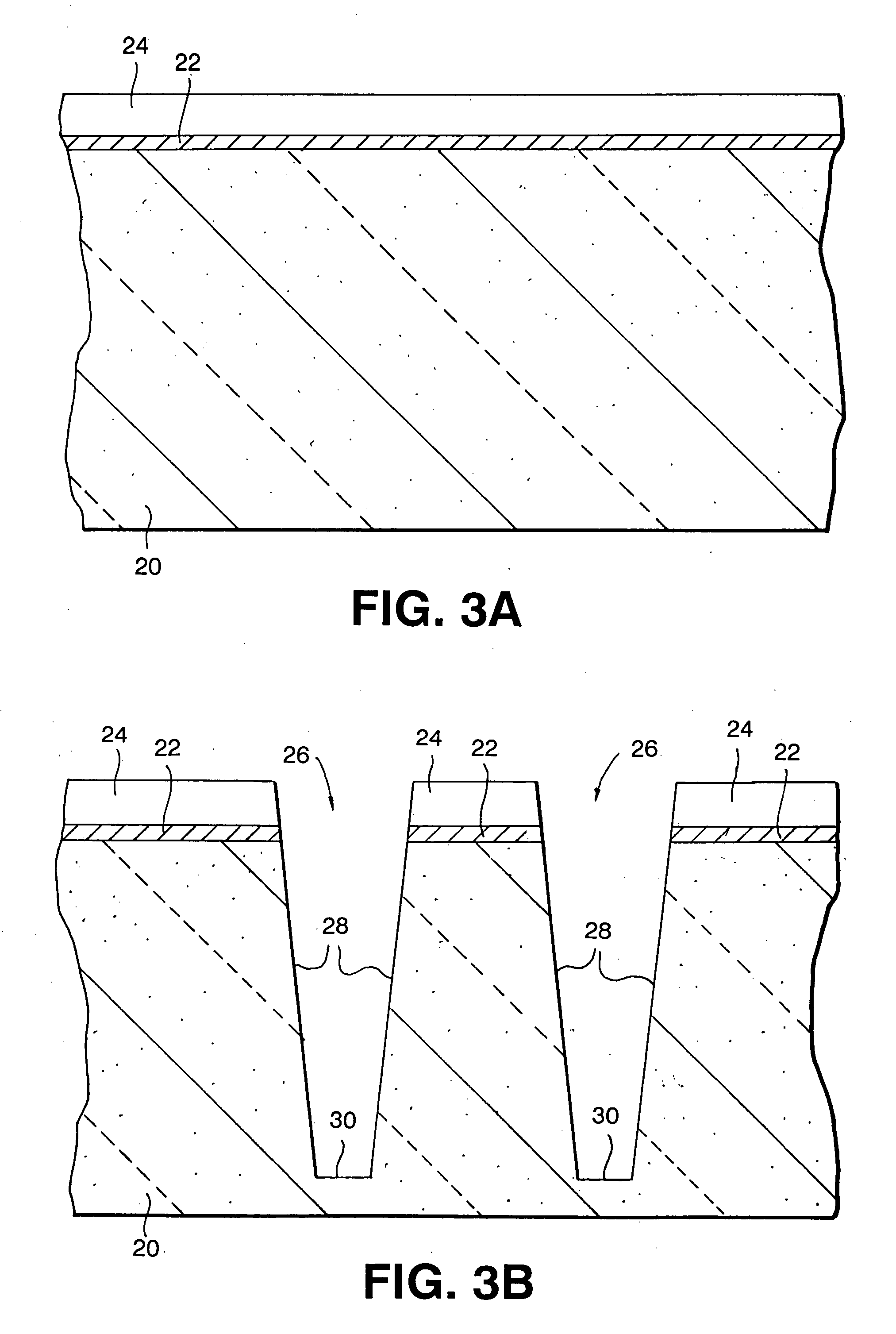Novel method to achieve increased trench depth, independent of CD as defined by lithography
- Summary
- Abstract
- Description
- Claims
- Application Information
AI Technical Summary
Benefits of technology
Problems solved by technology
Method used
Image
Examples
first embodiment
[0034] The above basic processing steps will be further described in conjunction with the following three embodiments. Reference is first made to FIGS. 3A-3E which illustrate the present invention. Specifically, FIG. 3A shows an initial structure that is employed in the present invention. The initial structure shown in FIG. 3A comprises substrate 20, pad layer 22 present atop a surface of substrate 20 and mask 24 present atop pad layer 22. The structure shown in FIG. 3A is fabricated using conventional processing steps that are well known to those skilled in the art and the illustrated structure includes conventional materials that are also well known to those skilled in the art.
[0035] For example, substrate 20 comprises any semiconducting material including, but not limited to: Si, Ge, SiGe, GaAs, InAs, InP and all other III / V semiconductor compounds. Layered substrates containing the same or different semiconducting material such as Si / SiGe, and silicon-on-insulators (SOIs) are al...
third embodiment
[0054] In accordance with the present invention, selective epitaxial silicon film 32 is formed only on upper sidewalls of each deep trench where device connections, such as buried straps, are later fabricated, leaving the bottom portion of the trench untouched. To achieve formation of the epitaxial silicon film on the upper sidewalls of each deep trench, liner 40 is formed on the exposed surfaces of substrate 20 within each deep trench structure using a conventional thermal growing process, a conventional deposition process or a combination thereof. Liner 40 may be composed of an oxide (formed by thermal oxidation) or an oxide / nitride stack (formed by thermal oxidation and deposition of a nitride layer). The structure including liner 40 is shown in FIG. 5A.
[0055] Each deep trench containing liner 40 is then filled with resist material 42 using a conventional deposition process and thereafter a recessed etching process is employed to remove portions of resist material 42 from the upp...
PUM
 Login to View More
Login to View More Abstract
Description
Claims
Application Information
 Login to View More
Login to View More - R&D
- Intellectual Property
- Life Sciences
- Materials
- Tech Scout
- Unparalleled Data Quality
- Higher Quality Content
- 60% Fewer Hallucinations
Browse by: Latest US Patents, China's latest patents, Technical Efficacy Thesaurus, Application Domain, Technology Topic, Popular Technical Reports.
© 2025 PatSnap. All rights reserved.Legal|Privacy policy|Modern Slavery Act Transparency Statement|Sitemap|About US| Contact US: help@patsnap.com



